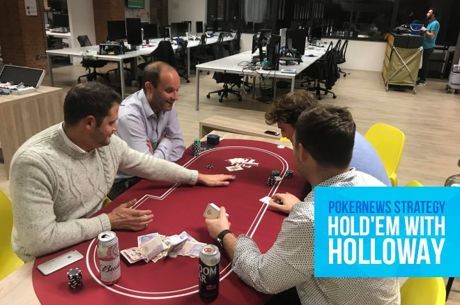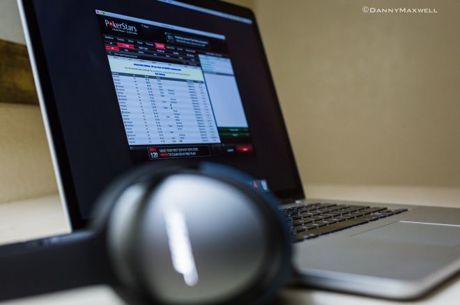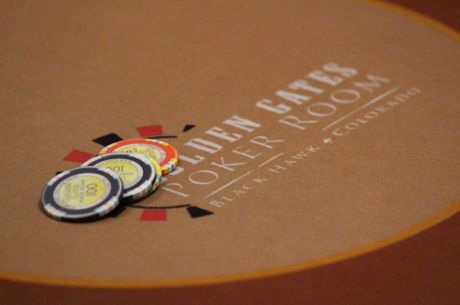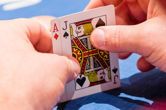Observe Value Betting Patterns Early to Pick Off Bluffs Later

Recently in a $1,000 buy-in live tournament I noticed an opponent bet small twice with a pair of fives on a board where he could not be called by much worse.
It had been three ways to the KxKx5x flop on which he had bet, then on a turn Qx this player bet a second time. Both times he bet small in proportion to his hand strength, it turned out.
Later, I saw this same opponent check behind with what was decidedly the best hand. In that instance he had missed an obvious spot to value bet, as the board in question was not particularly scary.
How best to act upon this kind of information? When you see it live you can exploit your opponents later on. Because the board will be different, they may not realize that a read you made on them applies to it. If they did not value bet thinly in one river situation, there is a good chance they will not in another, even if the first example was a dry ace-high board and the second was a coordinated board with a possible flush.
In other words, they will not realize how you managed to call them, and therefore, your read, still concealed, could pay dividends in future spots as well.
Here's a hand that came up later in the same tournament in which I was able to use this information I had picked up earlier regarding this player's relative timidity with value betting.
The Flop and Turn: Getting to Heads-Up
The blinds were 250/500 with a 500 big blind ante when an active, loose-aggressive player opened from under the gun to 1,200 and the player who I had been observing before called from middle position.
It folded to me in the small blind where I called with 9?9?. After the big blind folded the three of us saw the flop come K?5?2?, and the action went check-check-check.
The loose-aggressive player had been betting often, but mostly when he could apply pressure, from position, on one opponent. That was his favorite situation. After checking the flop, then, it appeared he might have given up on the hand.
The turn was the 7?, putting three hearts on the board. I decided it was best to lead out for value and protection. If it checked through again, I would allow any random one-heart hand to see the river for free. Meanwhile I could be called by worse made hands and worse draws, and then decide on the river whether to value bet my hand, to try to bluff catch, or to check and fold.
The pot was 4,600 (with effective stacks over 50,000) and I led out for 2,900. I don't want to bet less than half the pot in this scenario, as I don't want to make things easy on a weak hand like A?10? or a 6x5x-type hand. I am rarely beat at this point in the hand, but worse hands like A?Xx, 8x8x, 7xXx, and AxQ? are going to call a lot and without regard to my sizing. I should charge them.
The loose-aggressive initial raiser got out of the way, but the opponent I discussed above called. My read, remember, is that this player cannot bet a hand for thin value.
The River: Executing a Plan
The river card was the 10?, making the final board K?5?2?7?10?. The four-flush had missed, but a second overcard had come to my medium pocket pair.
In this scenario, especially given my read, I think I have an easy check. My opponent will almost always call with a ten if I bet, but should basically never bet it himself unless he has Kx10x, 10x7x, and so on. On the other hand, a second bet could pressure a hand like 8x8x or 7x6x to fold.
Finally, my opponent should have very few strong hands and some hands he needs to bluff. And we've already established he cannot value bet without a very strong hand and he has few of those. All of this adds up to a good combination of factors for me.
I checked and my opponent bet 4,500 into 10,300. Now, this may not seem like a big size relative to the pot. But in live poker not everyone counts the pot size. It is bigger than the turn bet by enough to represent a strong hand.
Remember the first hand? My opponent would probably bet smaller with a naked king. Moreover, he bet this size with one 5,000 chip �� that might seem bigger in his mind because again, he is not counting the pot.
I have an easy call here, but it is important not to snap-call these situations. First, I want to think things through to make sure I am executing my plan for the hand and not simply reacting. On the live felt, reacting is all too easy and it is rarely, if ever, better than thinking things through.
Secondly, I do not want my opponent to get the impression I have him pegged �� that I foresaw this river check-call on the turn, or that I had been working towards it after observing his previous hands. I want to do the opposite of talking through my reasoning out loud.
So after taking a little time first I did call, and my opponent showed A?J? for a missed flush draw.
He had made a reasonable enough call on the turn, if he had known my hand. The instances the river comes an offsuit-queen and he bets, I can call as well. Same with an offsuit-jack, in fact, as I expect I��ll often be shown an Ax10x-type hand on those occasions, since this player checks back AxJx on that card.
In any case, the hand well illustrated an example of using earlier observations of what a player does when value betting with a hand in order to identify an instance of the same player later betting as a bluff.









